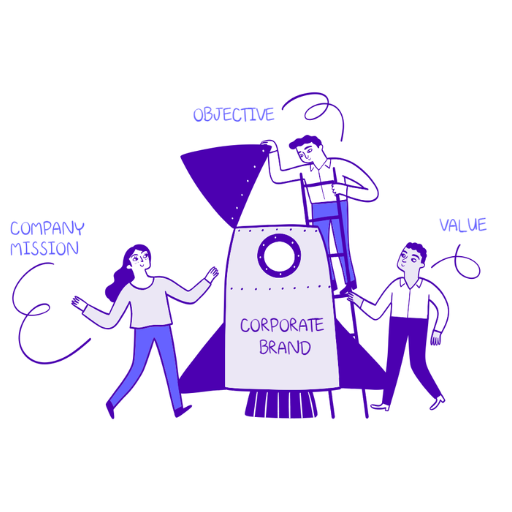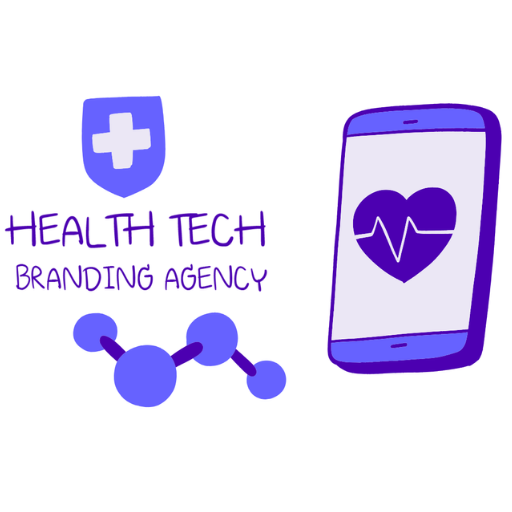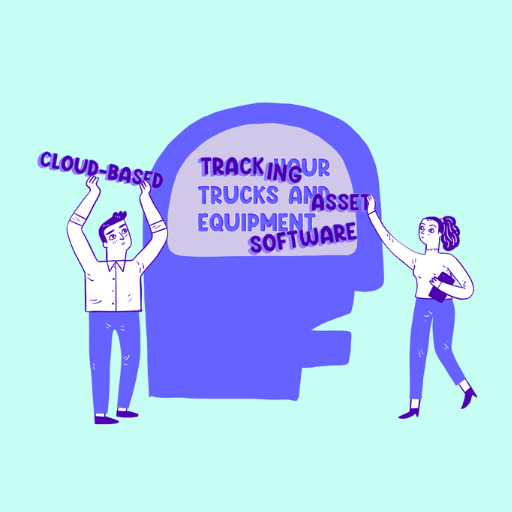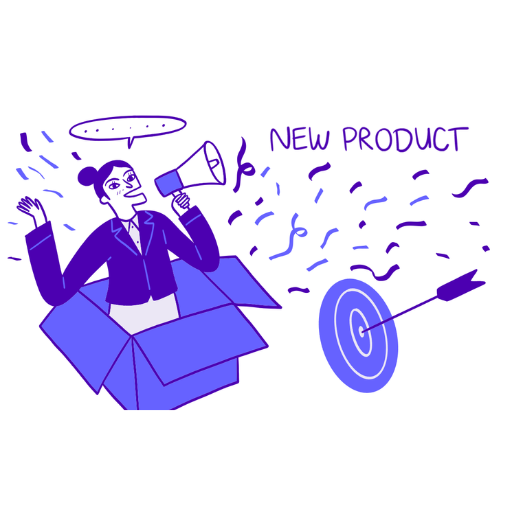.png)
Having worked with some of the most successful SaaS companies to come out of Silicon Slopes, we’ve learned a lot about what works and what doesn’t in building SaaS brands that scale. Here are five guiding principles we’ve found helpful in branding SaaS companies that aim to create or lead their categories, make a significant difference for good in the world, and maximize their valuations.
SaaS branding principles:
- Establish a purpose statement early on that aligns with your core beliefs.
Defining a purpose statement early on helps your business stand out and punch above its weight by defining the difference you make in the world beyond making money. A well-crafted brand purpose statement helps attract like-minded customers, employees, and partners and connect with them on a more values-driven and emotional level rather than a purely transactional basis. If you need assistance with this, get in touch with our SaaS branding specialist for more details.
In working with Rob Nelson, founder and CEO of Grow, the no-code full-stack business intelligence (BI) platform, we had the privilege of engaging with him on brand positioning and messaging three different times during his eight-year journey, which ultimately culminated in a successful acquisition by Epicor. The purpose statement we helped Rob articulate, “We empower everyone to make data-driven decisions,” continues to guide the company and helped customers and suitors appreciate Rob’s unique vision and business model in giving more customers’ employees access to Grow’s BI platform that traditional BI solutions, by recognizing that everyone benefits from making data-decisions in your company, not just the C-Suite.

Remember that you have to genuinely believe in your purpose statement, or it won’t resonate with your employees and customers. You have to live in alignment with it for your employees to believe and buy into it.
In working with One Meta Inc., the real-time AI translation and transcription SaaS, we helped founder and CEO Saul Leal articulate a purpose statement that literally moves people. When Saul met with a prospective customer and school superintendent in Texas, they asked him what his purpose was. Saul answered by saying, “We create a more understanding world,” which is the purpose statement we helped him create. The customer immediately stood up and hugged Saul, saying with some emotion, “That’s my purpose, too!” Talk about a sales conversion!
- Think about what your SaaS brand wants to be when it grows up.
I first heard about this idea from a good friend, Christian Hansen, at HINT Creative, and it’s true. By anticipating your business's long-term destination and full-grown expression, you can anticipate a path forward that will help you avoid making short-sighted decisions that cost you valuable time and brand equity.
For example, the name of your business should reflect not only your initial point of entry in the market but also where you aim to be in the future. When Consensus, the category leader in the intelligent demo automation category, first came to market, it was named DemoChimp. While this name was playful and suggested that the company’s platform was simple for small- and medium-sized businesses to use, it didn’t translate when the company moved upmarket and started competing for enterprise deals. In helping the company rebrand from DemoChimp to Consensus, we made the brand relevant to large and small customers and suggested its role in helping buying groups agree on which software to buy. The new name helped solidify Consensus’ claim to the leadership position in its new category.
Remember to trademark your company name in your business classes. Registering your name with the US Patent and Trademark Office (USPTO) will deter other companies from trying to take it from you and help protect your investment in building a brand name that is synonymous with your category and desired brand position in the minds of your customers and partners.

We worked with a fintech company that was experiencing tremendous YOY growth when it received a legitimate cease and desist letter from a competitor. Instead of being able to focus all its energy on continuing to accelerate its profitable growth, the company and its leadership team had to spend valuable time and resources changing its name, website and collateral mid-hockey stick. They navigated through these challenges well, but it would have been a lot easier to have chosen a different name in the first place or to have registered their name from the outset.
- Go beyond product-market fit to find Message Market Fit™.
Everyone in the Saas community knows about “The Lean Startup” by Eric Ries and Lean Canvas, the one-page business plan from Ash Maurya, and the product-market fit methodology they teach and embrace. The process of deeply understanding your customer’s problem and challenging your assumptions by validating your business model through an iterative build-measure-learn cycle before even starting to build and test product prototypes is well established.
What’s less well understood and often not put into practice is testing your assumptions to test and validate your marketing messages. We call this process Message Market Fit™, and it can make a big difference in building out your customer development program and go-to-market strategy.
If your customers are getting good value from your product after using it and continue to renew their subscriptions, but your sales velocity is slow, it may be that you’re using the wrong words to talk with customers about your product. Finding the right words is a collaborative process that invites customers to co-create your messaging with you. Using our Message Market Fit process can help you find words that resonate with your ideal customers and personas.
We saw this firsthand working with an ag tech SaaS company. The founders were brothers, and they embraced our Message Market Fit process and worked with us to create Minimum Viable Messages™ to test with potential customers at a trade show where they had a booth in Fargo, North Dakota. We based our version 1.0 messaging on the founders’ knowledge of their industry from growing up on a farm and having already sold some successful deals and renewals. Based on their insights, we quickly built a basic messaging framework and applied it to a pop-up banner and product sheet to generate meaningful customer feedback at the show.
Using our messaging collateral, we intercepted people walking the show and asked if they would share their feedback with us on our messaging. To our surprise, the headline we used didn’t communicate the main idea of the software. In fact, it took customers to a completely different place than we’d intended. We asked customers what the words meant to them and why.
Over several conversations, their answers formed a pattern. Based on their puzzled looks and confusing responses, we realized we were presenting investor language to a grower or farmer audience, which made sense since the founders were trying to raise capital at that time. We were speaking the wrong language to the right audience. Once we explained the underlying concepts we were trying to get across to different groups of growers throughout the day, along with other exhibitors who knew the grower audience really well (it was a slow show), they helped us translate our ideas into their language in real time.
Returning from the show, we re-wrote the parts of our collateral that were missing the mark and created a new set of marketing collateral for the next show in Anaheim. The response we got at the second show with the second iteration of messaging was much better than before, but we learned that we still had some blind spots. After we further refined the messaging, the founders took a third version of the collateral to another show in Grand Forks, North Dakota and hit pay dirt.
Someone they pitched liked their message so much that she personally drove with them to her company headquarters nearby after the show and introduced them to her colleague at a sugar beat grower with over 400,000 acres of product, saying, “John, you gotta talk to these guys.” That warm introduction and the hugely relevant conversation that followed with such a big outfit would have never happened had the founders kept using the same blunt messaging.
- Build a complete messaging framework, including brand and audience messaging.
Once you’ve validated your audience-specific messaging, it’s important to zoom out and create your overarching SaaS branding messaging, which ought to resonate with all your audiences all at once. By definition, brand messaging is audience and offering agnostic. It’s the messaging that informs and inspires the copy you put on the homepage of your website. Like a keynote address at a conference, brand messaging has to speak to everyone in attendance at your show. And just like a conference, after the keynote speaker has finished their remarks, everyone in attendance breaks out into different groups and attends breakout sessions focused on discussing and addressing topics of particular interest to them based on their unique needs and use cases.
SaaS companies often start out serving one audience with one offering. As those companies evolve and grow, some faster than others, they need to update their brand and audience messaging to reflect their newly expanded portfolio of offerings.
Lucidchart asked us to help them better understand why individual customers were buying their software so they could communicate more value to enterprise customers by articulating the value of their SaaS offerings to each department and audience within large organizations, from IT and software engineering to operations, HR and sales – not to mention horizontal applications that span every audience and industry.

In partnership with Lucidchart’s product team, we interviewed dozens of customers representing different market segments to reverse engineer their buyer journeys. We unpacked their pain points and linked their jobs to be done to the Lucidchart product features, advantages, and benefits that helped inform the messaging on Lucidchart’s website's solution pages today. This integrated audience, pain point, FAB-driven approach to messaging development clarifies what to say to each audience and helps bridge the gap between sales, marketing and client success teams. It helps them develop a greater appreciation for one another and go to market in a more aligned way.
It’s important to note that the brand messaging on Lucidchart’s homepage is derived from and aligns with its audience-specific messaging. The homepage benefit-driven headlines and supporting “blurb” paragraphs are broader in scope than on the audience-specific pages to resonate with a broader, keynote-like audience.
Thinking through the matrix of messages played an important role in growing Lucidchart’s enterprise business and has helped to fuel its continued growth to more than $100M in ARR.
- Recognize the difference between messaging and copy.
While messaging defines what to say, copywriting is how to say it. Understanding the difference between the two can help you avoid relinquishing control over developing and validating messaging that resonates with your audiences by giving into a purely creative-driven copywriting process that may be clever but communicates the wrong ideas and concepts.
Defining your brand tone of voice is essential to getting your message across in a way that resonates with customers on an emotional level. Developing a deep understanding of their problem and how they think and talk about it through our Message Market Fit process goes a long way to informing your brand voice.
However counterintuitive, we’ve found it helpful to wait to define your brand tone of voice until after you’ve taken your messaging and copywriting for a test drive by writing, reviewing and approving the copy for your website. Going through this exercise first is a good way to figure out what works and why from a copywriting perspective. With this informed perspective in mind, you can describe your brand voice with more insight, confidence and authority, having worked through any issues that may have been below the surface.
We trust that these principles will prove beneficial as you further develop and expand your b2b SaaS branding efforts. For SaaS companies looking to solidify their brand position and maximize their market impact, taking our brand wheel assessment can provide valuable insights.
Frequently Asked Questions
To brand a SaaS company effectively:
- Start by defining the SaaS company's mission, values, and unique value proposition.
- Develop a strong brand identity that reflects these elements and resonates with the target audience.
- Utilize the services of a SaaS branding agency to ensure consistency in branding efforts across all touchpoints.
- Implement branding strategies such as content marketing, social media engagement, and b2b SaaS marketing to build brand recognition and attract potential customers.
- Regularly evaluate and refine branding efforts to maintain a strong brand presence and drive business success.
Branding is crucial for SaaS startups as it establishes a strong brand identity and distinguishes them in the competitive SaaS industry. Effective SaaS branding builds brand recognition and trust among potential customers, fosters brand loyalty and drives business growth. A strong brand identity communicates the SaaS company's unique value proposition and sets the foundation for successful branding efforts, ultimately contributing to the SaaS business's success.
Customer feedback plays a crucial role in shaping the brand strategy of a SaaS startup by providing valuable insights into customer preferences, needs, and behaviors. By actively soliciting customer feedback, SaaS startups can identify areas for improvement and innovation, allowing them to refine their brand strategy and offerings to meet customer needs better. Incorporating customer feedback into branding efforts strengthens brand loyalty and enhances brand value, driving business growth and success.
SaaS startups can effectively communicate their unique value proposition through strategic branding initiatives that highlight the benefits and features of their SaaS solution. SaaS startups can differentiate themselves and attract target audiences by crafting compelling messaging, storytelling, and visual elements that resonate with potential customers. Consistent branding efforts across all platforms and channels reinforce the SaaS company's value proposition, enhance brand recognition and drive customer acquisition and retention in the SaaS market.
SaaS startups can maintain brand consistency across various platforms and channels by developing comprehensive brand guidelines that outline key branding elements such as logo usage, color palette, typography, and tone of voice. Hiring a SaaS branding agency can also ensure consistency in branding efforts across all touchpoints. Regular audits of branding materials and collaboration with internal teams and external partners help reinforce brand consistency, enhance brand recognition and strengthen the SaaS company's brand identity.
The brand identity of SaaS covers the visual and verbal elements that represent a SaaS company's personality, values, and offerings. This includes branding elements such as logo, color palette, typography, and tone of voice, collectively conveying the SaaS company's unique value proposition and positioning it within the SaaS industry.
A good SaaS logo effectively communicates the company's brand identity and resonates with its target audience. It should be simple, memorable, and versatile, making it easily recognizable across various platforms and sizes. Including relevant imagery or symbols related to the SaaS industry fosters the logo's impact and differentiation. Choosing appropriate colors and typography that align with the SaaS company's brand identity reinforces brand recognition and strengthens the company's position.





%20-%20Made%20with%20PosterMyWall.jpg)
.png)
.png)
.png)

.png)



.png)




.png)








.png)
.png)
.png)

.png)



.png)




.png)







.png)
.png)

.png)
.png)


.png)
.png)


.png)
.png)

.png)
.png)
.png)
.png)